Rare Rides: The Hyundai Pony From 1986, Which Delighted All of Canada
2019 Hyundai Veloster - N Stands for Next
It wasn’t a secret that Hyundai was set to launch its next Veloster in 2018. It also was fairly certain that there would be a turbo model available.
Yet Hyundai still managed to stuff a surprise up its sleeve – the high-performance N version will come to America.
Hyundai promises “up to” 275 horsepower and 260 lb-ft of torque from the 2.0-liter direct-injected turbocharged four-banger, and the sole transmission is a six-speed manual.
The 2.75-door Returns: Hyundai Teases a New Veloster
Ahead of next week’s North American International Auto Show, where TTAC will have a full complement of boots on the ground, Hyundai has released a few teaser shots of its next Veloster.
Spy shots have been floating around for a while now, supporting the thesis that the upcoming Hyundai hatch will retain its oddball door configuration. It may even have a performance model, dubbed the N, a letter so chosen by the Korean automaker because all the cool bits of the alphabet were already taken.
Hyundai Plans New Fuel Cell Vehicle for CES, But What's This About Powering Your Home?
Despite the inherent challenges with using hydrogen as a fuel source, Hyundai is plowing ahead with a new generation of fuel cell vehicle as a follow up to the Tucson Fuel Cell it currently offers in limited markets.
Difference is, the current hydrogen-powered Tucson shares a lot of sheetmetal with the traditionally fuelled Tucson. The new, as yet unnamed, hydrogen crossover doesn’t look like anything in Hyundai’s portfolio … at least not yet.
My $1.6 Million Fleet in 2017 - the Good, the Bad, and the Ugly
In a year of great political transition, there was also much change afoot at The Truth About Cars and more than a few alterations made in the way my life intersects with the automotive industry.
2017 was crazy. Yet midst all of the external upheaval (Trump, TTAC, Apple skipping the iPhone 9, the launch of a new Honda Odyssey) and an array of internal disorder (GoodCarBadCar’s acquisition, a move to rural Prince Edward Island, Miata purchase, new job) there was at least one constant.
I drove a ton of cars. Many tons of cars, to be more accurate.
Ace of Base: 2018 Hyundai Elantra SE
This Korean automaker has been known since the dawn of time as a purveyor of value-packed cars, making a name for itself by offering machines comparable in price to its competition but stuffed to the gunwales with features for which The Other Guy charged extra.
Hyundai introduced the Elantra nameplate about 20 years ago and has since taken it through more styling iterations than Mickey Rourke — frequently, and often dramatically, updating its looks. The current model went on sale a couple of model years ago and continues to pack ‘em in with valuable features at a cut-rate price.
Next-generation Hyundai Veloster Coming to Detroit, and Not a Moment Too Soon
If the multitude of spy shots circulating around the internet wasn’t enough of a clue, Hyundai’s making it clear. There will be another Veloster, but you’ll have to wait about six weeks to see it.
The Veloster, an oddball take on the traditional hatchback, debuted in 2011 for the 2012 model year and, despite the declining popularity of traditional passenger cars (and especially coupes), managed to rack up pretty consistent sales since its unveiling. Sporting three side doors of uneven length and two-piece rear glass, the Veloster only really ran into sales trouble this year.
The next Veloster looks to keep the original’s unique profile, but Hyundai’s flagging fortunes requires a hatch hot enough to buoy the brand.
Hyundai's Labor Issues Return as Kona Production Stops Prior to U.S. Launch
Hyundai Motor Company has, once again, found itself at the mercy of an unhappy workforce. No stranger to labor disputes, the company hinted that it might scale back its at-home labor in South Korea — presumably aware that the possible response would be negative, which it was. But the timing couldn’t be worse.
The Kona crossover is believed to be the model that will turn things around for Hyundai in the United States, but a new labor strike has put the export vehicle’s production on hold only a week after it started.
Genesis of a Dealer Dispute With Hyundai Motor America
You would think you’d be happy when a peer succeeds and goes on to greater things, but the reality is often a little grimier and less magnanimous. Genesis has been a sore subject around Hyundai Motor Company ever since the automaker spun it off into its own brand. However, this has less to do with its role as an elite nameplate and more about how to manage it as part of the greater whole.
Earlier this month, dealers expressed their dismay by walking out of a meeting with Hyundai Motor America’s executives — which included CEO Kenny Lee and COO Brian Smith. The incident didn’t last particularly long and the conference eventually got back on track, but it proves there’s unresolved issues as to how the Genesis brand should be handled.
2018 Hyundai Accent First Drive - Comfort Can Be Cheap
Selling a car in the subcompact/compact classes is an exercise in balance.
For one thing, car buyers will no tolerate a penalty box, even at cheap price points (the Mitsubishi Mirage notwithstanding). There’s a baseline of expectations that’s higher than it once was. Case in point: A previous-generation Hyundai Accent rental nearly drove one of our writers to tears on a recent vacation.
Enter the redesigned 2018 Hyundai Accent. Content matters now in this class, and two of the three trims offer the features most buyers have come to expect these days.
Hyundai keeps it simple with the new Accent. There’s just three trims, one engine, and two transmissions. Options are grouped by trim level.
Hyundai Lays Out Its Crossover Plan; Eight CUVs on the Way
After being caught off guard by the American public’s thirst for high-riding, commodious, all-weather vehicles, Hyundai’s planning to make up for lost time.
As part of an effort we’ve known about for a year, Hyundai laid its “build more crossovers” strategy bare on Wednesday. Including the subcompact 2018 Kona, which lands on U.S. shores early next year, the automaker will “debut” eight new or redesigned CUVs over the next two years. Unfortunately, details are threadbare.
Going from Hyundai’s product timeline, the future lineup includes (among others) a new A-segment crossover, a diesel model, and an electric. Already burned, Hyundai’s now covering its bases.
Searching for Volume, Hyundai Considering Bringing More Vehicles Stateside: Report
Hyundai says it hasn’t made a decision one way or the other, but a South Korean publication claims company officials are considering a huge U.S. production push, all designed to reverse falling sales.
Reported by Seoul Economic Daily, the tentative plan (leaked by anonymous industry officials) is all about getting more utility vehicles into the hands of American buyers. It would see U.S.-market Tucson and Kona crossovers, currently built in Korea, move assembly to Montgomery, Alabama. A pickup truck would follow.
It's End-of-year Incentive Time, but One Deal Stands Out
Snow has already touched Minneapolis pavement, meaning it’s time for automakers to hurry up and clear out 2017 models. Special offers, like the coming winter, are rolling in fast.
Not surprisingly, many of the end-of-year incentives target the increasingly unloved passenger car segment. If two or four doors and a trunk is your bag, you’re in luck, though crossover shoppers aren’t being ignored in the rush to unload old inventory. However, if you’re a fan of the Big H, and especially its sportier offerings, Christmas might have just arrived early.
There Just Might Be a Kona Under the Tree This Christmas
Desperate eager to fill holes in its product lineup and put some bounce in its sales step, Hyundai unveiled the subcompact Kona crossover earlier this year, with the model arriving on North American shores in the first quarter of 2018. The Kona is just one part of Hyundai’s revamp of its crossover lineup — and its culture.
More crossovers, bigger and smaller crossovers, EV crossovers, and faster crossovers make up Hyundai’s short-term goals. By “faster,” we’re referring to the development cycle, unless the brand has some hot “N” action waiting for one of its cargo-friendly models. Caught off guard by the utility vehicle craze, Hyundai wants to pare its product planning window down from three years to a year-and-a-half, allowing a quicker response to new market trends.
But the first step towards a more agile Hyundai Motor Company is the Kona. Small, cladded, and efficient, the 2018 Kona might arrive sooner than planned.
Hope for Hyundai? China Agrees to Ignore South Korea's Missiles
When it comes to the positively frosty relationship between China and South Korea, this is the part of the movie where the two countries bump into each other at the bookstore and realize they should work out their troubles instead of giving each other the silent treatment. You know, for the kids.
For South Korea, China’s decision to warm up the relationship — which soured after the jittery country placed U.S.-supplied defensive missiles on its soil — is the best news its auto manufacturing sector has heard in ages. Perhaps soon it won’t be frowned upon to own a Hyundai or Kia in Beijing.
UPDATE: Hyundai Recalls 443,545 Recalled Cars Over Seatbelt Concerns
(An initial version of this story indicated that the first recall could result in a situation where “fixed” vehicles contained the same safety issue as unfixed vehicles. This is incorrect — Hyundai initiated the second recall after becoming concerned that mechanics working on a fixed vehicle *after* the recall could inadvertently cause a similar safety issue. The story has been updated to reflect this.)
Hyundai finds itself in the unusual position of recalling nearly half a million sedans after an earlier recall designed to prevent seatbelts from detaching from the floor led to concerns that the same thing might happen again.
In late February, Hyundai issued a recall for nearly 978,000 Sonata and Sonata Hybrids across several models years following two crashes where the front seat passenger’s seatbelt failed. Dealers were to inspect the connections between the seat belt linkages and the seat belt anchor pretensioners. However, the first recall didn’t remove all of the future risk.
2017 Hyundai Ioniq Electric Review - Discount Club Membership
Governments big and small can issue far-off bans on gasoline and diesel all they want, but in the here and now, no one’s stopping you from taking home a Ford F-350 crew cab for family hauling duties. There’s no shadowy apparatchik barring the front door at the local Dodge dealership, preventing you from signing on the dotted line for that 392 Scat Pack or Hellcat.
Choice, glorious choice, awaits us all. Enjoy it while you can. For now, only the number of coins in our pockets (and maybe our parking situation) can keep those automotive love affairs at bay.
So, is it any wonder few people buy an electric car? The future’s electric, CEOs tell us, but high prices, low ranges, and a fledgling recharging network means EV ownership was mainly — at least until the Chevrolet Bolt came along — the domain of those dropping big bucks on Mr. Musk’s long-range wondercars. Destitute, but still achingly green? A used Nissan Leaf can haul your butt across town for a price rapidly approaching $0.
Is there room in this lopsided landscape for a new Hyundai with no exhaust pipe, a price lower than the competition, and a body that doesn’t scream “status”? If there is, can you live with it?
More Car, Less Dealership: Hyundai's New Retail Program Shoots for Smoother Transactions
Last month Volkswagen announced it had significantly upgraded its warranties and, not a week later, Hyundai gave word that it was making a big announcement on October 10th. As the brand with the most extensive factory coverage in the business (along with Kia and Mitsubishi), we expected them to respond assertively.
The gauntlet had been thrown down and it was time for Hyundai to remind VW who the world’s value leader was. What would the response be? One million miles of bumper-to-bumper coverage? Free hats? We were ready for anything and everything.
The announcement came and Hyundai is now promoting its new retail program, called Shopper Assurance, which allows you to schedule a test drive via the internet, browse dealer inventories online, and offers a three-day money-back guarantee. Needless to say, it’s slightly disappointing, but it isn’t all bad news.
Genesis Motors U.S. Dealer Network Will Be Separate From Hyundai by 2020
Hyundai’s Genesis Motors offshoot intends to finalize its transition into an entirely separate U.S. dealer network within the next three years.
The process of building an undetermined number of distinct Genesis outlets has not yet begun, but it’s clear the brand is well aware of the limitations with which it’s currently operating.
“The reality is, many, many luxury customers tell us they love our products, they’re amazing, but I’m not going into a Hyundai store to buy it,” U.S. Genesis boss Erwin Raphael tells Automotive News.
No kidding.
Hyundai Accent Ditches Hatchback for 2018 Redesign
With sales slipping, Hyundai has decided to trim some fat on the fifth-generation Accent. While a hatchback remains available for the rest of the world, the automaker has indicated the U.S. will receive no such option. This will probably put a few value-oriented motorists with a penchant for liftgates off. But, assuming they can stomach a crossover, Hyundai’s subcompact Kona is right around the corner — and there’s little reason to assume they wouldn’t go for it.
Recent history has proven that the average American will shun a ho-hum hatchback and happily spend more on its crossover equivalent. Pigeonholing the Accent as a sedan will keep it from getting in the Kona’s way. However, this also allows it to remain a traditional car and ignore all the trappings of being SUV-adjacent.
We Regret to Inform You… the Hyundai I30 N Is Outstanding
Unfortunately, the new Hyundai i30 N is, by all accounts, a terrific hot hatchback.
The i30, you’ll recall, is essentially the Hyundai Elantra GT that’s beginning to arrive in U.S. showrooms, a pleasantly tasty car in Sport trim.
But Hyundai’s new performance N sub-brand, headed up by former BMW dynamics sage Albert Biermann, is not yet America-bound. And while European critics broadly praise the i30 N — not just as “a pretty stunning first effort from Hyundai’s N division” but “up there with the best” competitors — and celebrate the availability of yet another viable performance car, the car will not make it across the pond.
Genesis Motors Boss Pays No Attention to the Kia Stinger
The 2018 Kia Stinger and 2018 Genesis G70 are platform partners, two new sporty and luxurious four-doors from the Hyundai Kia Automotive Group.
The timing of their release is synchronized. They utilize the same engine portfolio. They’ll compete in a similar price bracket. But there are differences. For starters, the styling is markedly different, the kind of difference one expects to find when one car, the Kia, is a hatchback and the other is a sedan. The Kia Stinger works harder to get noticed; the Genesis G70 is more subdued.
But while Hyundai’s Genesis spinoff will need to further differentiate the G70 from a marketing standpoint in order to provide a true luxury brand glow, it’s already been made clear by Albert Biermann, the former BMW chassis guru who’s now head of vehicle testing for Hyundai and Kia, that the cars are very similar. In terms of driving experience, “It’s not so easy maybe as with the styling, but I think we can find good tuning and calibration that set them a little bit apart,” Biermann said earlier this year.
A little bit.
Yet in a conversation with Manfred Fitzgerald, the senior vice president at the Genesis brand, Wards Auto received a strikingly different answer. Asked how the Genesis G70 differs from the Kia Stinger, Fitzgerald says, “You tell me. I don’t look at the Stinger. We’re focusing on something totally different.”
Your teenager calls this #shade.
A Proper Pickup Truck, Not Just a Santa Cruz, Is Being Considered For Production at Hyundai
“We’ve been talking about it for a number of years now,” Hyundai Australia’s chief operating officer, Scott Grant, said at the Genesis G70 global reveal.
No, he’s not talking about the G70, or any Genesis for that matter. He’s not talking about the H-100 pictured above. He’s not talking about the Tucson-based Hyundai Santa Cruz that finally seems destined for production after years of back-and-forth indecision.
Hyundai is now considering a true pickup truck. “We’re confident of having something on the other side of 2020,” Grant says.
Hyundai’s coming for your pickup truck market share, Nissan.
Rumors of FCA Seeking Asian Partner Reignite - This Time With Hyundai
Snubbed by both the Germans and the Chinese, Fiat Chrysler Automobiles is continuing its journey to find the automaker that will sweep it off its feet and say, “Let’s build a factory together.” However, if CEO Sergio Marchionne maintains that FCA will be bought by an established automaker, he’s running out of options. The automotive dating pool isn’t particularly deep.
While there was some stirrings of vague Korean interest when news broke of talks between FCA and Chinese automakers, those rumors dissipated quickly. But reports of a possible business deal between Hyundai and the Italian-American company surfaced recently after Great Wall Motors shrugged off its proposed bid for Jeep. FCA later said it had not received any offer from the Chinese manufacturer.
Presumably, Great Wall would have used FCA to supplement its sport utility sales and begin making moves on North America. Another brand that might be interested in bolstering its supply of SUVs is Hyundai — something the South Korean press has been buzzing about all week.
The Pressure's On: Hyundai Motor America's Newly Minted CEO Needs to Turn It Around
After Hyundai’s American division canned former CEO David Zuchowski for failing to meet internal sales targets last December, it’s no mystery what Job One is for the new guy.
Kyung Soo Lee, a 61-year-old veteran of the company who started his career back in 1982, takes the helm of a troubled ship next week, Hyundai announced Thursday. As president and CEO, Lee (Kenny to his friends) is responsible for reversing a dismal sales trend that sunk his predecessor, as well as the company’s U.S. fortunes.
The Genesis G70 Goes on Sale September 15th… In Korea
You must wait a little while longer, but we’ll soon have a much better idea of what the Genesis G70 will look like. The entry-level sports sedan from Hyundai’s upmarket Genesis division debuts in its South Korea home market next Friday, September 15, 2017, at an event at Seoul’s Olympic Park.
In fact, in advance of the unveiling in Korea, we already have a clearer view of the Genesis G70, thanks to the timely response of one Michael Giele, who spotted the new Genesis sedan and posted images to Twitter.
Destined to provide the next major shakeup in the small luxury sports sedan sector after the Alfa Romeo Giulia, Jaguar XE, and Cadillac ATS arrived with great expectations, the Genesis G70 will be tasked with challenging the Infiniti Q50 and Lexus IS, more likely than not with more equipment and lower MSRPs. It won’t be easy for Hyundai’s Genesis brand, so the car had better look good.
Automakers Bolt From the Gates With Post-Harvey Discounts
There was quite a debate occurring in TTAC’s private Slack channel yesterday — a conversation sparked by knowledge of a new discount from Fiat Chrysler Automobiles extended to those who lost insured vehicles in Hurricane Harvey.
The timing of the offer — CarsDirect claims the deal was valid as of August 28th, even as images and video of the waterborne and helicopter rescues of Houston-area residents filled television screens and social media — raised an eyebrow. How soon is too soon? It would seem the main concerns of impacted residents over the past couple of days included finding food and shelter, reconnecting with loved ones, and perhaps picking up the pieces in both flood- and wind-damaged communities. Not shopping for a new vehicle online.
The nature of the offer sparked further debate. Affected residents in certain Texas and Louisiana counties can show a copy of their insurance claim form to receive $500 off the purchase or lease of a new FCA vehicle, certain models (like the Jeep Wrangler, Chrysler 200, SRT models, and Alfa Romeo Giulia Quadrifoglio) not included. Buyers can combine the offer with other applicable discounts.
$500 off that new Grand Cherokee? Whoo-wee, you might say. At what dollar amount does a post-disaster offer change from feeling like an opportunistic sales grab and more like a gesture of kind-hearted humanitarian assistance? Or is this just cynical thinking — should we regard any offer as a sign of generosity? It’s certainly not a new practice for any automaker. On and on it went.
Of course, any conclusion comes down to the individual. But this morning we heard FCA isn’t alone in offering deals to Harvey victims.
2018 Hyundai Elantra GT Sport First Drive - and 2018 Sonata, Too
Now that Steph has had his crack at it, we figured it was time for another one of us to get some wheel time with the 2018 Hyundai Elantra GT. Oh, and I spent about half an hour piloting the refreshed 2018 Hyundai Sonata, too.
I’ll cover the Sonata at the bottom of this report. For now, let’s talk about Hyundai’s hottest hatch, at least until the Veloster returns with an available N performance trim.
Based on the European Hyundai i30 but presented with unique-to-North America suspension tuning and powertrain choices, the 2018 Elantra GT arrives with a new design language and subtly enhanced proportions.
Hyundai will readily tell you the Elantra GT is a “tweener” – meant to be sportier than the standard Elantra sedan (including that car’s Sport trim), but not so sporty as to be a direct threat to the Volkswagen GTI and Ford Focus ST.
Hyundai Rolls Out Green Roadmap, Promises Three EVs by 2022 and an Electric Kona Next Year
Hyundai isn’t about to let Tesla hog all the eco glory. The automaker has announced a near-term roadmap for green vehicle production, promising 31 hybrid, plug-in hybrid, electric, and fuel cell models by 2020, shared between the Hyundai, Kia, and Genesis brands.
Having already joined the fray with its compact Ioniq, offered in hybrid, plug-in, and EV flavors, the company wants a larger presence in the fledgling (but growing) EV scene. To this end, it’s planning long-range, high-end EVs built on a dedicated platform, as well as a much-needed crossover that dispenses with gas stations altogether. The Kona, which arrives in the U.S. in gas-powered guise this winter, serves as a body donor.
Will a 242-mile electric crossover give Elon Musk reason to sweat?
Hyundai, Hoping to Avoid Falling Behind Again, is Slashing Its Product Design Cycle in Half
Getting a new or redesigned model off the drawing board and into showrooms isn’t like designing and posting a meme on Facebook. It’s time consuming, and automakers run the risk of being left behind as rivals cash in on the latest hot bodystyle or styling trend.
Hyundai knows this, having underestimated the buying public’s affection for anything with a high ride height and rear liftgate. The Korean automaker made a bundle on its well-fleshed-out car lineup following the recession, but the seismic shift towards SUVs and crossovers left it scrambling to bolster its three-vehicle utility lineup. The result? Stagnant sales.
This won’t happen under a new plan, the company’s senior vice president of design claims. Hyundai’s hitting the product throttle.
The Tucson Is Hyundai's Current U.S. Success Story, but Inventory Problems Are Restricting That Success
Hyundai’s U.S. sales volume is down 13 percent through the first seven months of 2017, a year-over-year drop valued at 60,203 lost sales. Hyundai has fallen so quickly that its corporate partner, Kia, has managed to outsell Hyundai in America in each of the last three months.
But even with Hyundai sales falling nearly five times faster than the industry at large, and even with the two most popular products in the lineup — Elantra and Sonata — causing a 23-percent downturn in Hyundai passenger car sales, there’s good news to be heard out of Hyundai’s (shrinking) corner of the market.
The third-generation Tucson launched two years ago is a verifiable hit. Sales are perpetually rising. July 2017, in fact, was its best month ever.
But there’s bad news. Hyundai can’t get nearly enough Tucsons shipped across the Pacific from the compact crossover’s Ulsan, South Korea, assembly plant.
2018 Hyundai Elantra GT GLS Review - Wouldn't You Really Rather Have a Car?
Back in late June, Hyundai’s Canadian division bundled myself and a group of fellow journalists into a Quebec hotel, then proceeded to explain how crossovers are eating the compact car’s lunch.
The 2018 Elantra GT, the company’s representatives said, almost didn’t happen because of the unstoppable popularity of high-riding, cavernous utility vehicles. Hyundai’s U.S. crew apparently needed convincing that the next-generation GT was even worth the trouble. Essentially just an overseas-market i30 with a name change, the new GT’s North American salvation came from the fact few buyers opted for an Elantra-badged hatchback in recent years. Far more buyers take home a Ford Focus or Mazda 3 with five doors.
And so, having been assured that a much-improved GT — a hatchback with more cargo room, more available power, greater handling and sporting prowess, and cohesive, flirting-with-premium looks — would boost overall Elantra sales, we’ve come to this. An Elantra GT, now with more GT.
In GT Sport trim, the vastly reshaped, fourth-generation compact hatch dons the turbocharged 1.6-liter four-cylinder from the Elantra Sport, calls dibs on its athletic cousin’s sporty transmissions, and goes to town delivering value-packed driving excitement for the commuter who likes taking the long (and twisty) way home. This tester, however, is no Elantra GT Sport. Nope. It’s the plain ol’ Elantra GT — the Elantra GT you’ll see far more often than the throaty, scrappy Sport, probably while its owner performs the mundane cargo-hauling duties Hyundai so desperately wants its buyers to attempt.
Even in base form, Hyundai hopes the Elantra GT’s sporting abilities and generous cargo volume whispers a siren song would-be subcompact crossover buyers simply can’t ignore. Is it a convincing come-on?
New Plan: Hyundai Motor America Wants Separate Genesis Showrooms ASAP
“We do in fact have to expedite our process of separating our brands.”
– Genesis Motors General Manager Erwin Raphael
From the start, Hyundai Motor America’s plans to launch its upmarket Genesis brand inside Hyundai showrooms was easy to question. Do consumers want the link between a $68,100 Genesis G90 and a $14,745 Hyundai Accent to be so obvious?
Of course not. But affording Genesis a mere corner of certain Hyundai showrooms wasn’t the only problem — Genesis general manager Erwin Raphael also had issues early on with the number of Hyundai dealers signed up to sell the Genesis brand.
“We may see that (350) figure go down,” Raphael said in November 2016, only a few months after the brand began selling cars in America. “I think it is too high.”
Fast forward to August 2017 and Hyundai’s plan to eventually separate the Genesis brand with standalone showrooms, perhaps in 2020, is about to be pulled way forward. “For this brand to really survive and thrive,” Raphael tells Automotive News, “and for us to develop the culture within ourselves and within our dealer network to support and take care of these customers, we do in fact have to expedite our process of separating our brands.”
So what happens to all of those Hyundai dealers who recently spent thousands renovating showrooms to include Genesis studios?
Hyundai Rolls Out Pricing for Crossover-fighting 2018 Elantra GT; Entry Starts Just Above $20K
Hyundai, as we told you last month, has a pretty competent little hatchback on offer for 2018: the newly restyled, revamped, and (Hyundai hopes) reinvigorated Elantra GT. Sporting a mature European-designed body made possible by the overseas i30, the 2018 Elantra GT spices up its roomy hatch bonafides with available power — you’ll find 201 horsepower and 195 lb-ft of torque from the Elantra Sport-sourced 1.6-liter turbo four-cylinder in the GT Sport.
Its base powerplant isn’t necessarily a slouch, either. (You’ll be able to read a TTAC review of the GT next week.) A direct-injection 2.0-liter generating 162 hp and 150 lb-ft puts the entry-level Elantra sedan’s powerplant to shame, and the cargo room — well, Hyundai’s all about that GT cargo volume. Why else would it call the model “a viable alternative to small CUVs for buyers desiring more fun-to-drive characteristics and greater utility” in the preamble to its price list?
The 2018 price floor for Hyundai’s front-wheel-drive CUV fighter isn’t much higher than last year’s, and those optional ponies won’t exactly break the bank. You can improve a Korean car 12 ways to Sunday, but you still can’t charge more than the Japanese or Germans.
Light Entertainment: Answers To the Matching Taillight Challenge
Last week, we showed you four different vehicles, each with strikingly similar taillamps. So began the Taillamp Identification Challenge. (Un)fortunately, Flybrian was around, and came up with the correct answers just 10 minutes after the post went live.
So, the challenge was short lived, and all props go to Flybrian’s keen taillamp eye. It’s almost like he knows cars, or is a car dealer perhaps. Time for the official results.
Hyundai Acknowledges Seventh-Generation 2015-2017 Sonata "Didn't Turn Heads"
After the forgotten third-generation car, the odd and bulbous fourth-generation car, and the dull fifth-generation car, the sixth Hyundai Sonata was unveiled at the 2009 Los Angeles Auto Show. It was surprising, even shocking, that Hyundai so dramatically transformed its staid midsize car into a radical “fluidic sculpture” sedan.
In the United States, after averaging 132,000 sales over the previous half-decade, the Hyundai Sonata exploded. By 2012, Hyundai sold more than 230,000 copies, and the Sonata averaged 215,000 U.S. sales between 2010 and 2014, a 63-percent increase compared with the previous half-decade average.
The momentum was not sustained. The seventh-generation Hyundai Sonata debuted in the United States at 2014’s New York International Auto Show. Where did the fun go? Where was the drama, the cat-like headlamps, the desire to stand out from the pack?
“We went from a very striking design, to a very beautiful car, but it just didn’t turn heads like the car before it did,” Hyundai Motor America’s vice president of product planning, Mike O’Brien, tells Automotive News.
Hyundai Ioniq Sales Are Low, Inventory Ramp-Up Is Slow, Kia Niro Is the One Making Dough
Since arriving early this year, Hyundai Motor America has managed only a meager 4,881 sales of its Prius-fighting Ioniq. Hyundai is certain there are far more Ioniq sales that could occur, however, if only Hyundai had the Ioniqs to sell.
Supply isn’t just tight — the Ioniq Electric is essentially nonexistent at Hyundai’s showrooms in California, the only state where it’s (supposed to be) available.
Yet while Hyundai awaits greater Ioniq inventory, the lack of which is clearly to blame for the low volume to date, it’s becoming increasingly obvious that Kia came out on top in this deal.
Don't Let the Sun Shine In: 2018 Hyundai Sonata Eliminates the Panoramic Sunroof
Citing weight reduction and consequent improvements in fuel economy, Hyundai Motor America has removed the panoramic sunroof from every Sonata model for the 2018 model year.
Is the move away from vast sunroofs, spanning the breadth and length of the roof, back to conventional sunroofs truly going to result in measurable real-world fuel savings? No. Even a major engineering change such as the Sonata 2.0T’s new eight-speed automatic doesn’t translate to meaningful fuel efficiency gains: the combined EPA fuel economy for the 2018 Hyundai Sonata 2.0T remains the same as it was in 2017 at 26 miles per gallon.
Nor is the reduction of high-mounted panoramic sunroof’s weight and the subsequent lowering of the Sonata’s center of gravity going to be a major boon to the everyday handling of a mainstream midsize sedan.
Maybe the 2018 Sonata’s handling improves, unnoticeably. Perhaps the Sonata becomes more fuel efficient, insignificantly. But the real reason Hyundai has removed the panoramic sunroof from the 2018 Sonata? Blame Vitamin D.
Hyundai Kona Previews Future Designs, But Don't Expect Russian Dolls
“Each model will have its own identity.” – Luc Donckerwolke,
senior vice president, head of Hyundai Motor Design Center
Finally, long after the Nissan Juke, Subaru Crosstrek, Chevrolet Trax, Jeep Renegade, Honda HR-V, and Mazda CX-3, Hyundai is ready to launch the Kona subcompact crossover, at least in moderate volumes.
The Hyundai Kona is hardly a Tucson Lite; not remotely an Accent Allroad. An unusual face and bizarre use of cladding are all the more obvious because of the Kona’s tidy dimensions.
But while the 2018 Kona showcases a new Hyundai utility vehicle design language, Hyundai’s design leadership promises that future models won’t merely be enlargements of the same.
2018 Hyundai Sonata Limited 2.0T First Drive - More Content, More Face, Same Power
As Tim Cain put it so succinctly earlier this afternoon, the seventh-generation Hyundai Sonata’s exterior design, coming on the heels of the quite edgy 2011-2014 model, didn’t set American’s hearts aflame.
Even as standard content increased and the model’s value proposition burned just as brightly as before, its distinctively watered-down design turned off buyers. Well, Hyundai wants its apology heard loud and clear. For 2018, the Sonata atones for the previous generation’s sins by showing up with something to look at.
Namely, a brand new face. Oh, and how about that rear end, now with less ovals? While fore-and-aft facelifts are the hallmark of a mid-cycle design refresh, the 2018 Sonata’s changes aren’t just skin deep.
2018 Hyundai Sonata Will Not Kill the Crossover - Hyundai Keeps Its Hopes Humble
Launched for the 2015 model year, the seventh Hyundai Sonata was not the avant-garde successor to the 2011-2014 Sonata for which many hoped. The new Sonata, while objectively better in virtually every way, was missing a key ingredient.
For 2018, Hyundai has thoroughly refreshed the seventh-generation Sonata, hoping that a far more aggressive front fascia will draw more eyes. Hyundai went much further than the superficial, however, by stiffening the Sonata’s structure, upgrading to an eight-speed automatic, and including more safety equipment as standard fit.
Yet while Toyota and Honda believe their new Camry and new Accord can ignite the midsize sedan segment in a bid to wage war against a crossover onslaught, Hyundai’s goals for the refreshed 2018 Sonata are far more modest. Much more modest. Más modesto.
After Hyundai I30 N, Nrburgring Tuning Will Come to All New Hyundai Models
In Hyundai’s mind, consumers now know the brand builds reliable cars. Quality cars. Attractive cars. “But now we have the knowledge to add sportiness to that image,” says Klaus Köster, Hyundai’s European director for high performance vehicle development.
The Hyundai i30 N, essentially a high-performance version of the Hyundai Elantra GT that Americans will soon be able to purchase in less powerful iterations, is instantly becoming the foundation for a Hyundai brand that wants to be taken more seriously for its athleticism.
Just as the i30 N spent much of its development time at Hyundai’s six-year-old technical center beside Germany’s iconic Nürburgring circuit, now every Hyundai will be assessed at the Nürburgring.
The Santa Fe’s ‘Ring time probably won’t be published.
2018 Hyundai Elantra GT First Drive Review - Sidle Up to the Hatch Buffet
Years back, a neighbor of mine worked as an electrician’s apprentice while we both occupied different corners of a sketchy four-plex. Good guy. When an emergency arose, especially if the emergency was a sudden lack of tape, this was your man.
Anyway, with barely enough cash to buy beer on weekends, let alone a half-decent used pickup, the tools of his trade journeyed to the job site in a roomy, economical, and seemingly indestructible four-door liftback. It was, of course, a first-generation Hyundai Elantra GT, only with the contents of a small hardware store filling the area aft of the front seat.
A useful, if tepid, vehicle then, but one far more worthy of the GT moniker now.
The Korean automaker launched the Elantra GT in 2001, and has no intention of dropping the useful compact hatchback from the marketplace anytime soon, even though its U.S. executives required a dose of friendly Canadian persuasion to keep it alive south of the 49th parallel (according to Hyundai Canada brass). The pressure paid off, leaving Americans with yet another option in the “hotter hatch” segment.
No longer is the GT a one-engine affair, nor is it likely to continue as an afterthought in the minds of consumers. For 2018, Hyundai chose to spread the widest possible net with its newly enlarged hatch, hoping to lure would-be buyers away from better-known rivals while offering a sportier alternative to small crossovers.
The New 2018 Hyundai Accent Kills America's Accent Hatchback
Revealed in Canada earlier this year, the fifth-generation 2018 Hyundai Accent will not be offered in the United States in hatchback form.
In formally announcing the discontinuation of the Hyundai Azera in the company’s product lineup release yesterday, Hyundai also provided a level of detail regarding the 2018 Accent. Standard is a five-inch touchscreen; a seven-inch screen with Android Auto/Apple CarPlay is available. In a first for subcompacts, Hyundai’s Smart Trunk Release will have you waving your toes at the Accent’s bumper.
But in surprisingly harsh language from its own maker, Hyundai says the Accent’s “hatchback body style has been dropped.”
Dropped.
Like a client who doesn’t pay. Dropped. Like a walk-on who couldn’t crack a roster full of future NBAers. Dropped. Like an unnecessary subcompact bodystyle in a subcompact market that’s down 19 percent so far this year.
It's Official: The Hyundai Azera Is Dead After 2017 - Genesis Knocked It Down, SUVs Kicked It
In a release yesterday detailing the company’s 2018 lineup, Hyundai confirmed that U.S. market availability of the Hyundai Azera will be discontinued.
But have no fear, dear lover of affordable large sedans. The 2017 Hyundai Azera is not yet thin on the ground.
Roughly 1,000 Azeras are currently sitting on dealer lots across the United States, enough — at the Azera’s recent sales pace — to last until mid-fall.
The Azera doesn’t deserve to meet such a tragic end, but its demise is one we knew about long before Hyundai’s official announcement on July 5, 2017. U.S. sales plunged 82 percent over the last decade.
QOTD: Which Current Vehicle Has the Fewest Redeeming Qualities?
Even for a dyed-in-the-wool fanatic of a particular car, said fanatic is likely reasonable enough to see one or two flaws somewhere in their beloved ride of choice.
Conversely, the biggest consumer of Haterade for the very same car is often able to see a couple of good qualities or features in the vehicle they despise. Other times, the losers and haters passionate individuals on either side of the automotive aisle (road?) can come together and agree certain vehicles are just not that great, overall.
Today we ask: Which current vehicle has the fewest redeeming qualities?
North American Dealers Annoyed by Hyundai's Lousy Volume Strategy
Since 2009, Hyundai’s North American volume has seen record sales every single year. While the last few annual assessments haven’t resulted in the same volume boom as the immediate post-recession years, the company hasn’t seen any shrinkage — despite below-average incentive spending and a lineup that doesn’t exactly sync with the region’s evolving automotive tastes. Hyundai dealers are probably singing the brand’s praises and getting its logo tattooed on their staff then, right?
Not quite. While Hyundai has achieved nearly a decade of growth in the Wild West, dealers are growing increasingly disappointed with its tactics and are less than enthused about future business prospects — especially as it doesn’t appear Hyundai has any interest in scaling back car volume for the sake of SUV sales.
In fact, while both the Hyundai Elantra and Sonata remain higher-volume models, both have undergone a noticeable delivery decrease since 2012. Meanwhile, sales of utility vehicles like the Santa Fe and Tucson have nearly doubled in the same timeframe. Hyundai put 62,817 Tucson SUVs onto North American roads in 2012, and that figure rose to 113,502 last year. It could have been more, had the company been better at supplying those vehicles.
As Territory Shrinks, ISIS Draws Inspiration From George Peppard and Joins the Crossover Craze
If there’s one thing shared by members of ISIS and the Western world, it’s an appreciation for the utility and versatility of high-value crossovers. Yes, even militant, fundamentalist killers have a myriad of needs requiring the likes of a Hyundai Tucson or Kia Sorento.
As Iraqi forces continue their push into territory previously seized by members of the Islamic State, visual evidence has emerged of the desperate tactics employed by the retreating fighters. Perhaps the most surprising are a plethora of Korean crossovers outfitted for battle.
2018 Hyundai Kona: Late But Not Too Late, Little But Not As Little As The Next One
Nearly seven years after the Nissan Juke. Five years after the Buick Encore. Three years after the Jeep Renegade. Two and a half years after the Honda HR-V. Finally, the 2018 Hyundai Kona is set to arrive as the fourth and smallest member of Hyundai’s utility vehicle lineup.
With the silhouette of a Mazda CX-3, the quirky light treatment of a Nissan Juke, and the cladding of a Pontiac Vibe, the Hyundai Kona will arrive in North America in early 2018 with optional all-wheel drive and a new platform that will be shared with the unfortunately named Kia Stonic.
The platform, Hyundai says, “is optimized to permit SUV levels of ground clearance.” Don’t expect more than 6.7 inches, yet in the Kona’s segment, the little Hyundai won’t actually be that low. But it is small. At 164 inches from bumper to bumper, the Hyundai Kona stretches only two inches longer than a Hyundai Accent hatchback and is four inches shorter than the Mazda CX-3.
Yet by 2020, Hyundai intends to strengthen its crossover lineup by positioning below the B-segment Kona an even smaller A-segment utility vehicle. Like a sidecar for your Santa Fe.
Not So Scantily Clad: 2018 Hyundai Kona Accidentally Drops the Towel
The 2018 Hyundai Kona, which American subcompact crossover aficionados will be able to drool over in person in early 2018, will see its first spotlights during a Korean launch event tomorrow. However, much like private celebrity photographs, the Kona has bared all on the internet a day before the big reveal.
Hyundai hasn’t provided much in the way of specifications, though it has teased us with ever-revealing photos of its new global model for some time. For the automaker, a B-segment crossover isn’t timely — it’s overdue. Utility vehicles are the company’s top focus as the market moves away from the vehicles that sent Hyundai sales surging in the post-recession era.
So, what do you think?
Make Performance SUVs Affordable (Again?) - Hyundai Tucson Likely To Get The N Treatment
It’s time for performance SUVs to leave the luxury domain and make their way down into the mainstream.
And who better to bring a performance utility vehicle to the masses than the man who previously headed up BMW’s M division, Albert Biermann.
Biermann, after three decades at BMW and more than half a decade in charge at BMW M, joined the Hyundai Motor Group as head of vehicle test and high performance development in 2014. His list of responsibilities at Hyundai and Kia is lengthy. His aspirations for Hyundai’s N brand, according to Drive, are lofty.
But while conventional thought would lead you to believe Hyundai’s N performance sub-brand would focus on cars, Biermann says, “The fun-to-drive element is not limited to the size and segment of the car; you can create fun cars in every segment.”
As a result — and this won’t surprise anyone who remembers that Biermann’s previous position included oversight of M versions of the BMW X5 and BMW X6 — there’s likely a Hyundai Tucson N in the future.
Where Is Hyundai's Genesis Brand Getting Its Buyers From? Genesis' Spiritual Predecessor
Genesis Motors is soon to complete its first year on the U.S. market.
Through the first ten months of its run as Hyundai’s luxury spin-off, 15,254 copies of the Genesis G80 and Genesis G90 have been sold. That’s 15,254 buyers who all moved over from other auto brands. There was no other way — no repeat business, no C-Class to E-Class to S-Class-style chain reaction.
More of those buyers moved over from the Hyundai brand than anywhere else. That makes sense. The Genesis G80 is essentially a second-generation Hyundai Genesis sedan. The Genesis G90 is a second-generation replacement for the Hyundai Equus. Hyundai buyers are trading in and trading up.
But when it comes to earning conquests from luxury rivals, Genesis Motors does so most often at the expense of Genesis’ forerunner, the last brand to do what Genesis wants to do.
QOTD: Are Hyundai's Troubles Nothing A Few SUVs Can't Fix?
This is not what you’d call a long history of sales difficulties for Hyundai, the seventh-best-selling auto brand in America. The 2016 calendar year was Hyundai Motor America’s best ever, the culmination of eight consecutive years of growth.
Yet while Hyundai rapidly — and not unpredictably — grew its U.S. sales coming out of the recession, nearly doubling its sales between 2008 and 2016, the rate of growth was notably slower in 2016 than in prior years. Blame capacity constraints, blame a car-centric lineup in an SUV-leaning world, blame conservative redesigns, blame whatever you want.
Regardless, Hyundai is feeling the pinch now. Year-over-year, sales have declined in each of the last six months. Hyundai’s U.S. CEO, Dave Zuchowski, was ousted just before Christmas 2016. In May 2017, for the first time ever, Kia outsold Hyundai in the United States. And on June 6, 2017, Hyundai Motor America’s vice president for sales, Derrick Hatami, exited the building as well.
All is not well. So then, more SUVs?
Hyundai U.S. Sales Vice President Derrick Hatami Is Out, Effective Immediately
Updated at 10:00pm on June 6 with response from Hyundai.
Derrick Hatami, Hyundai Motor America’s vice president of sales for less than two years, has been removed from Hyundai’s leadership team as of today, June 6, 2017.
After record annual volume in the 2016 calendar year, Hyundai’s U.S. sales have been falling fast throughout 2017. Year-over-year, Hyundai volume declined in each of the last six months, including an 18-percent decline in May 2017.
That decline enabled partner brand Kia to outsell Hyundai for the first time in the brands’ U.S. history, evidently a source of embarrassment for Hyundai. Having already forced out the company’s U.S. CEO, Dave Zuchowski, just before Christmas last year after Hyundai’s rapid growth stalled, Derrick Hatami’s departure leaves a hole that will be filled in the interim by Hyundai’s southern regional general manager, Sam Brnovich, according to Automotive News.
Last week, Hyundai wasn’t short on excuses for the company’s poor May performance. This week, the excuses were apparently not good enough.
Challenged by Nissan and Toyota, Hyundai Pumps Up the Crossover Value
People don’t talk about crossovers in the same hushed and awed tones reserved for snarling muscle cars and sultry exotics, but mainstream automakers couldn’t care less. As long as their respective family haulers continue to sell like generators during a blackout, automakers are happy letting crossovers quietly fill the driveways of suburban America (while generating massive revenue).
However, nothing’s ever static in the industry, and crossover competition has never been more fierce. Recently, Nissan and Toyota issued a mid-year sales pitch to buyers, ramping up content and slashing prices on the Rogue and RAV4 to squeeze a few more sales from the low end of their respective lineups.
Naturally, Hyundai would be foolish not to fight back.
Next-Gen Hyundai Veloster Could Turn Up the Heat
With the Civic Type R expected to appear on lots any day now, and no end in sight to the continued popularity of the Ford Focus RS and Volkswagen Golf R, consumers can be forgiven for not thinking about the Hyundai Veloster.
The long-in-the-tooth model remains a valuable oddball for the automaker, but it isn’t without its flaws — namely, a super-harsh ride. Still, it’s a quirky model that adds flair in an increasingly conformist marketplace. Hyundai even saw fit to endow the Veloster with a turbocharged 1.6-liter four-cylinder in a bid to perk up its little hatch.
Despite falling sales, Hyundai isn’t giving up on the model, and a new report claims the Korean automaker could give the next-generation Veloster a heaping dose of competitiveness in the hot hatch segment.
The Koreans' American Battle: In May 2017, Kia Outsold Hyundai for the First Time Ever
May 2017 was not a particularly healthy sales month for either of South Korea’s two major automakers in the United States. Including Hyundai’s Genesis spinoff brand, the Hyundai-Kia Automotive Group declined 12 percent, year-over-year — a loss of more than 15,000 sales for the trio of Korean brands compared with May 2016.
Korea’s U.S. auto market share thus fell to 7.8 percent in May 2017, a drop of a full percentage point. In a market that’s seen sales fall 2 percent overall through the first five months of 2017, total Hyundai-Kia Automotive Group sales are down 7 percent following record annual volume in 2016.
Hyundai and Kia both underperformed the market in May, just as they’re both underperforming the market through the first five months of 2017. But by an altogether different standard, one member of the group will be pleased with May’s U.S. sales results.
In May 2017, for the first time in the brands’ U.S. sales history, Kia sold more new vehicles than Hyundai. Kia outsold Hyundai. Yes, it was the first time. But it surely won’t be the last.
Desperate Times Lead Hyundai Into an All-Ideas-On-Deck Strategy
Amid stagnating U.S. sales, a crash-dive in China, and a product lineup not optimally suited for growth, Hyundai is furiously crafting a salvation plan.
In North America and other utility-loving countries, the strategy is clear: more crossovers and a significant product shakeup. The little Kona is already on the way, though perhaps not as quickly as Hyundai had hoped.
China, however, presents a serious problem for the automaker. What was supposed to be a growth market for the company has now turned into the opposite. Hyundai’s share of the market has shrunk to 5 percent from last year’s 8.1 percent, which was down from years past. In March alone, after news of South Korea’s installation of a U.S.-supplied anti-missile defense system, Hyundai and Kia sales dropped 52 percent.
Determined to make the Chinese fall back into love, the automaker has a plan brewing.
Hyundai's Newest Crossover Has Hit a Snag
Hyundai, which found itself lagging behind its rivals in the lucrative crossover and SUV market and figured it should do something about it, is having trouble getting its desperately needed subcompact crossover into production.
The 2018 Kona, which we’ve so far seen only a portion of, is part of a better-late-than-never product push by the Korean automaker. A new small crossover was needed to to mine a growing segment and boost Hyundai’s flagging U.S. sales, but the reality of building cars in Korea has thrown up a roadblock.
NHTSA Opens Investigation Into Hyundai's Theta II Engine Debris Recalls
The timeliness of a recall of Hyundai and Kia vehicles equipped with Theta II four-cylinder engines is the focus of a formal National Highway Traffic Safety Administration investigation revealed today.
Metal engine debris resulting from a faulty production process is behind the expansive recall of nearly 1.7 million vehicles, but the NHTSA wants to know if the recall expanded too slowly. Just how much Hyundai knew about the widespread issue is a big question mark, made all the more pressing by the testimony of a company whistleblower.



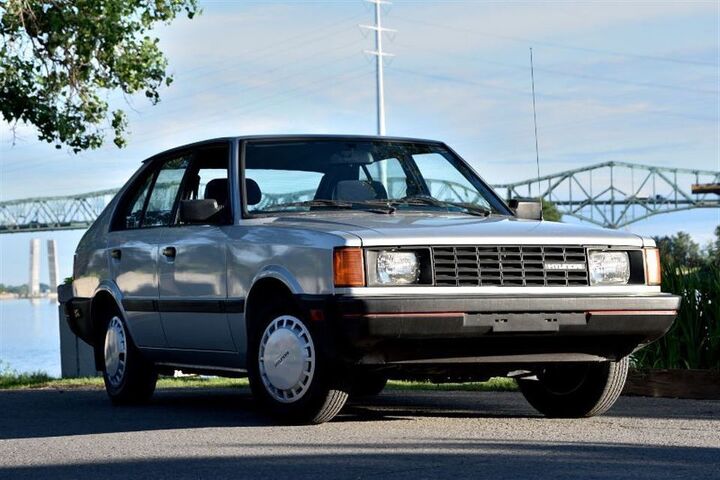
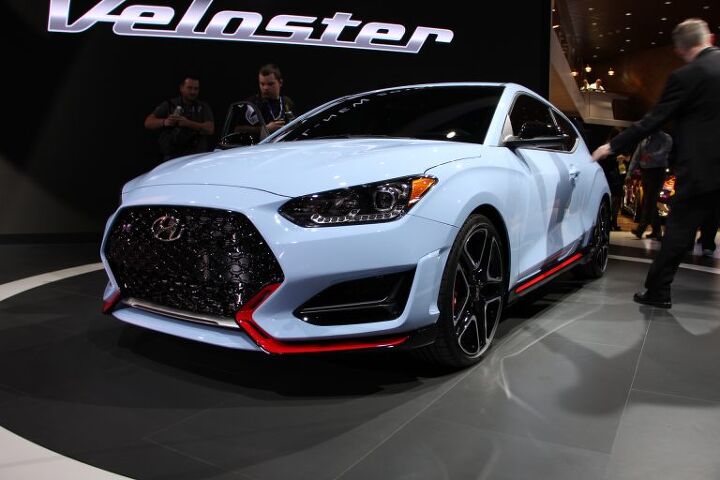



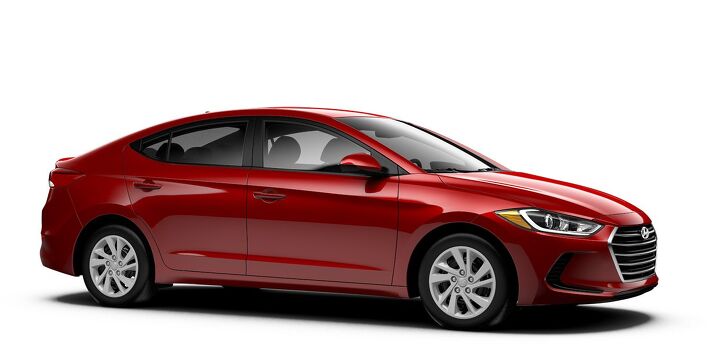

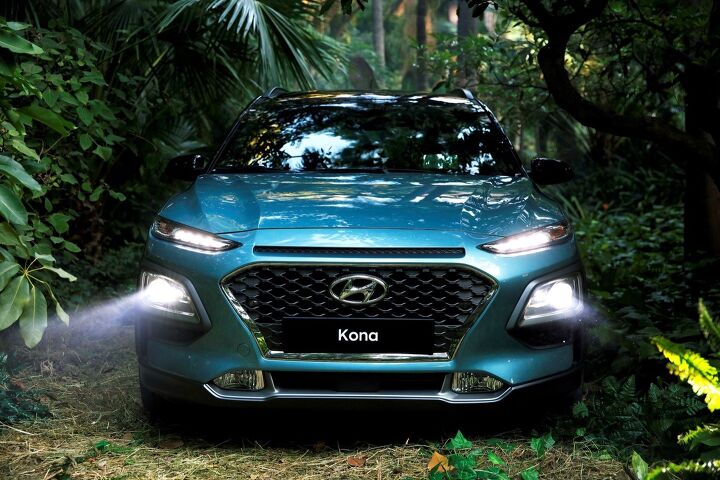
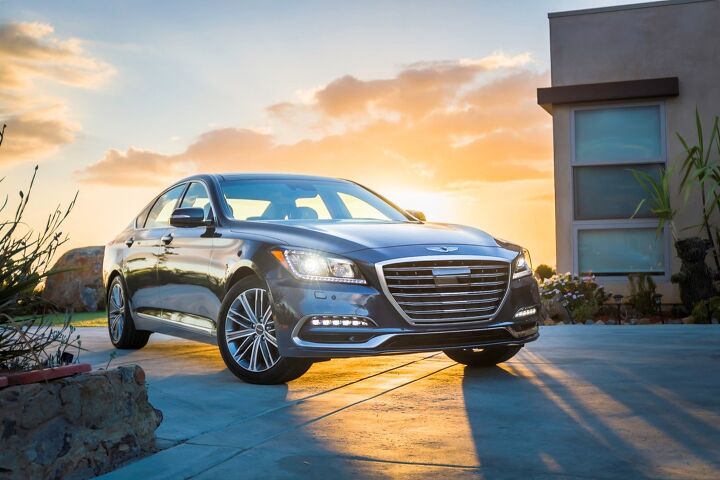
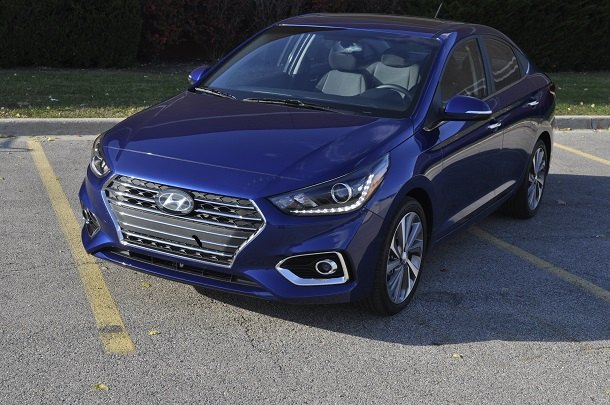

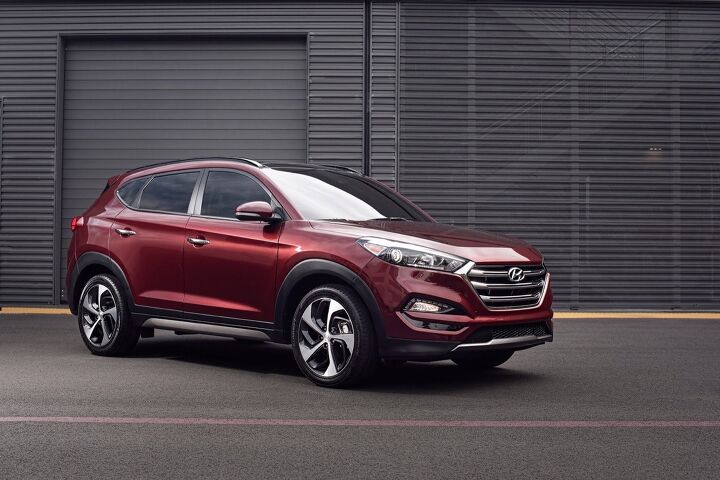


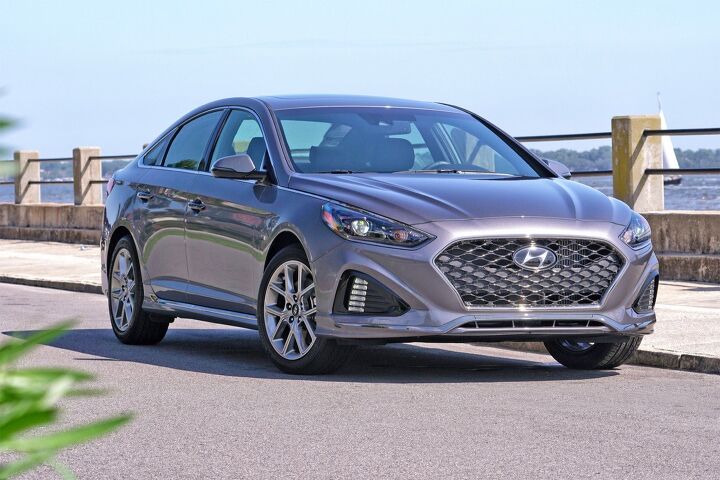

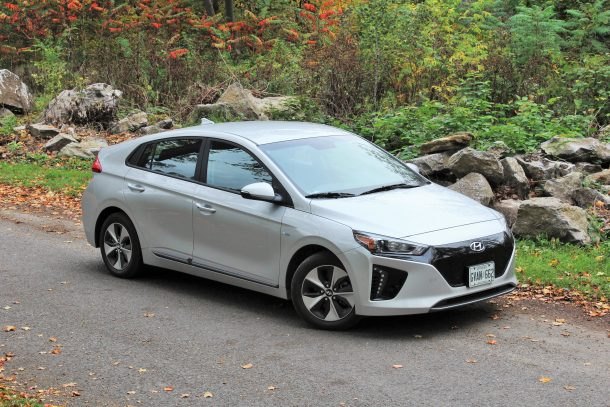

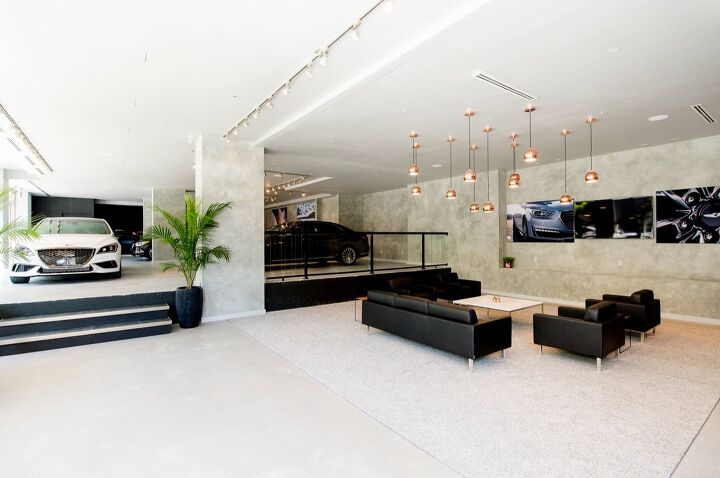
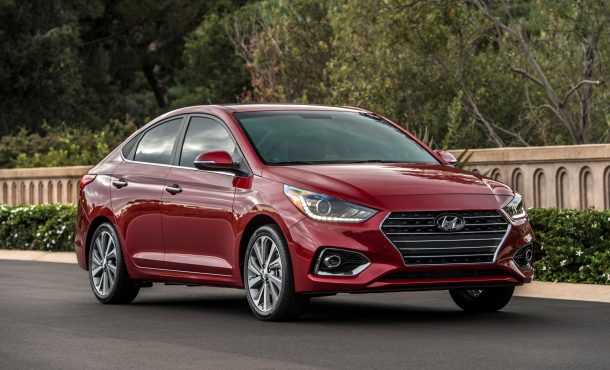
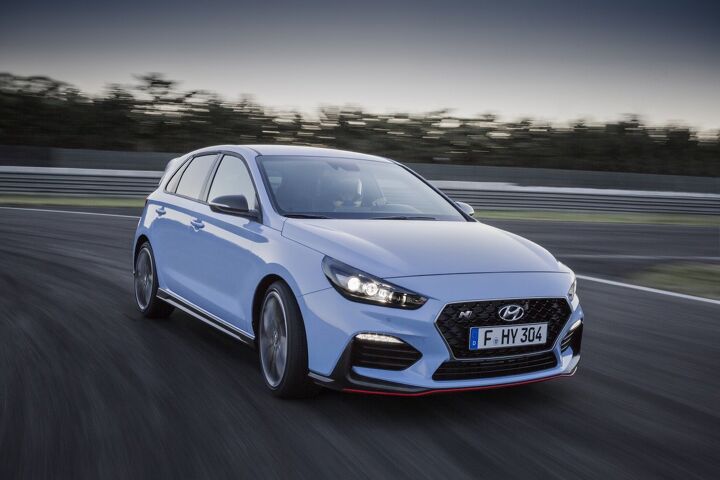

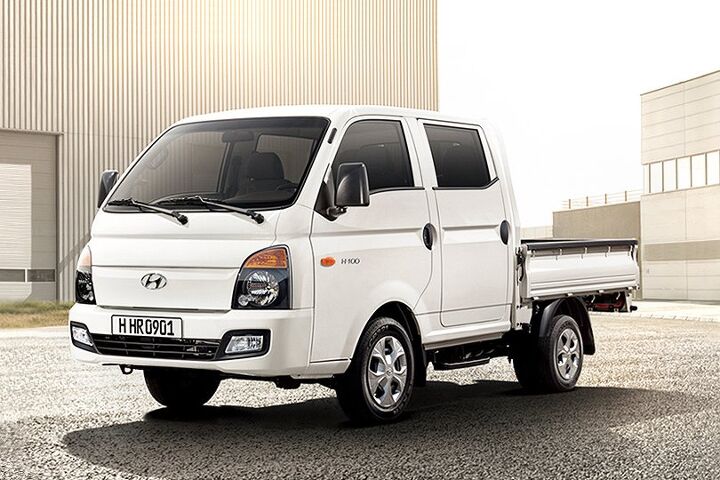
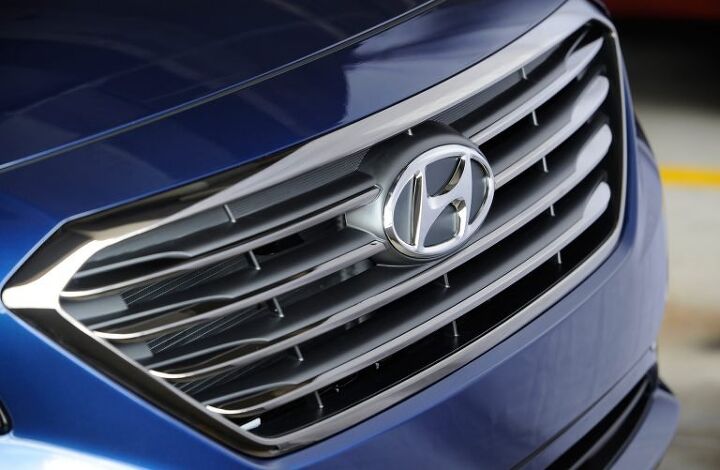
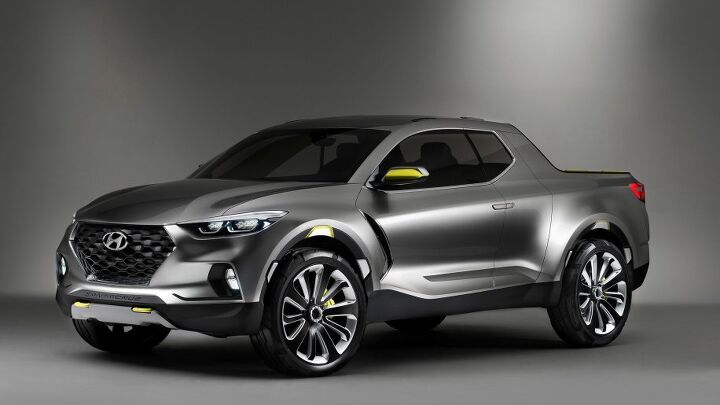
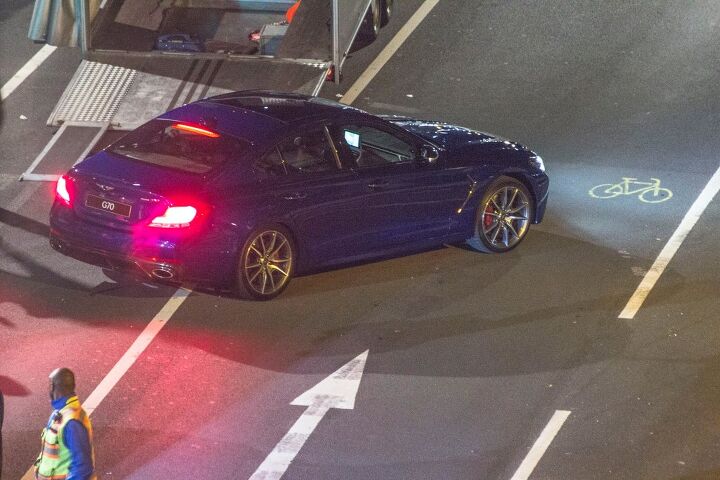

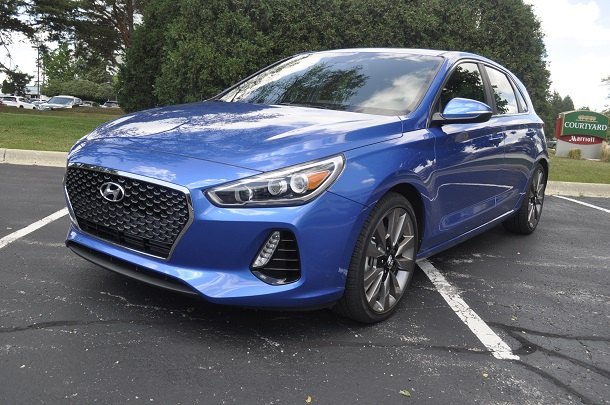


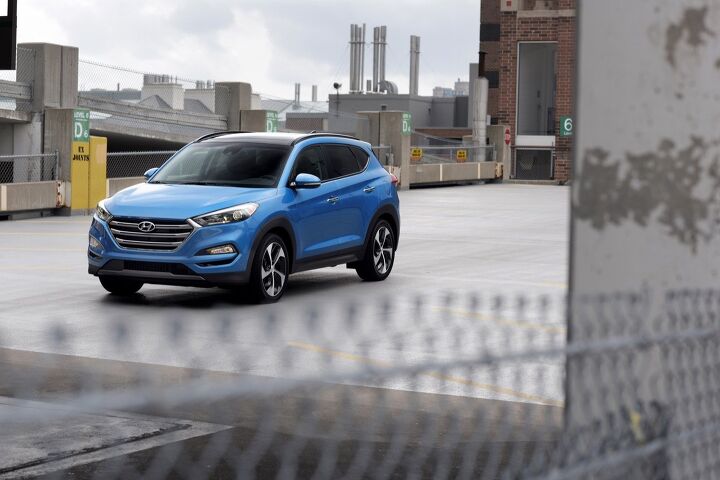
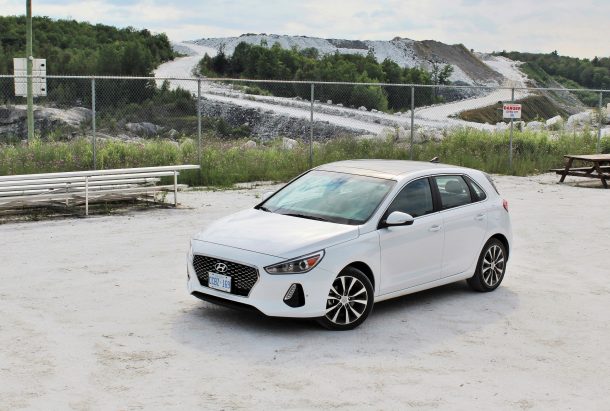
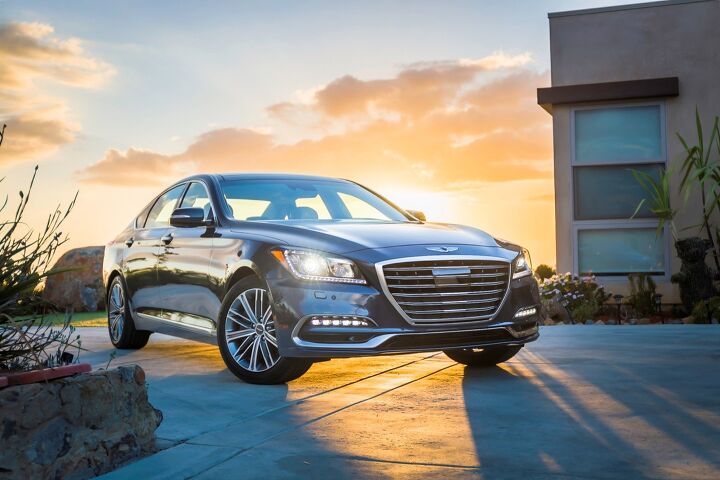




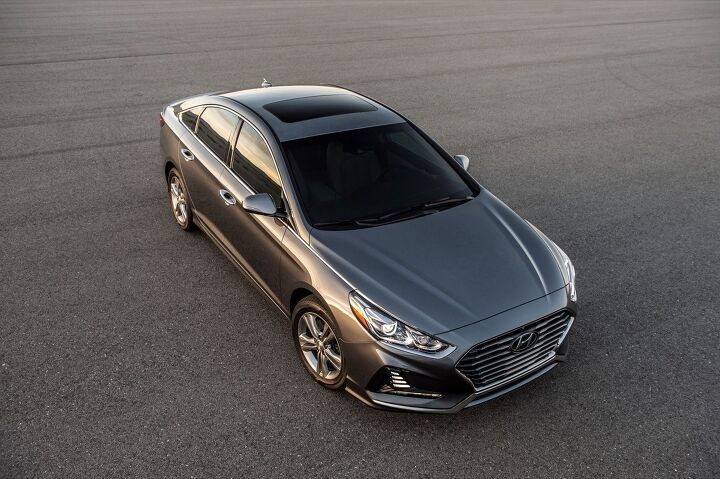


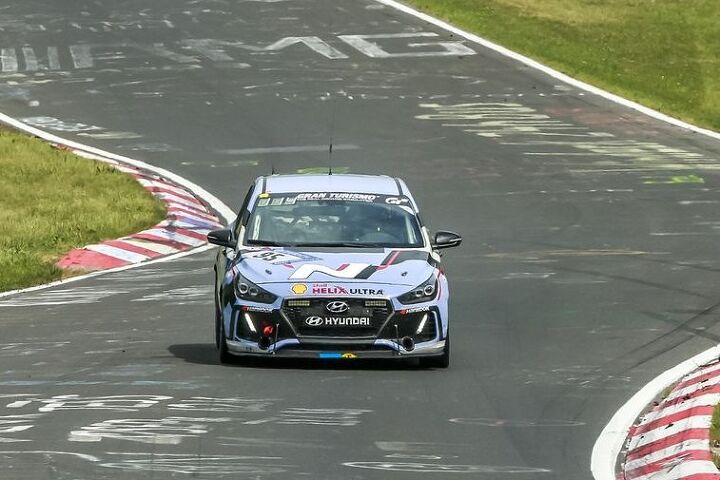

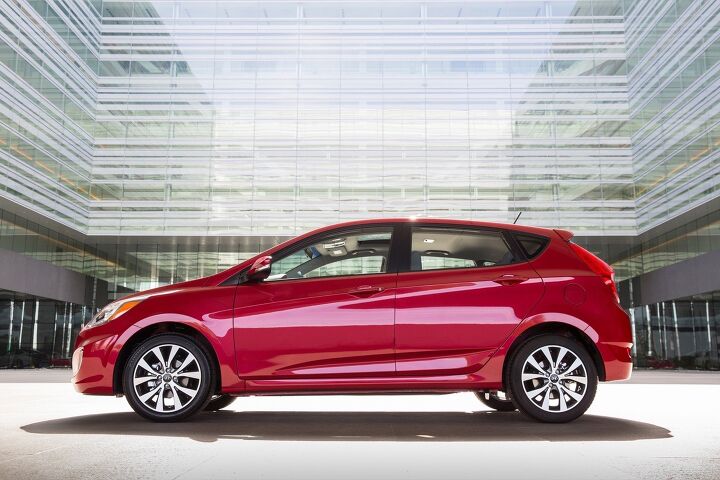
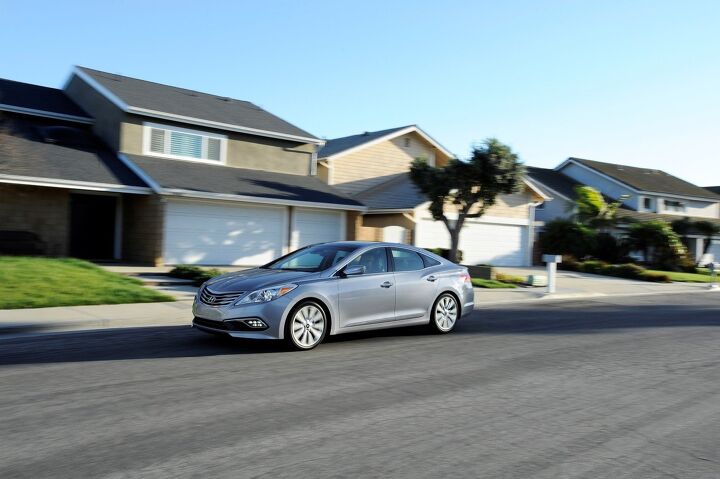






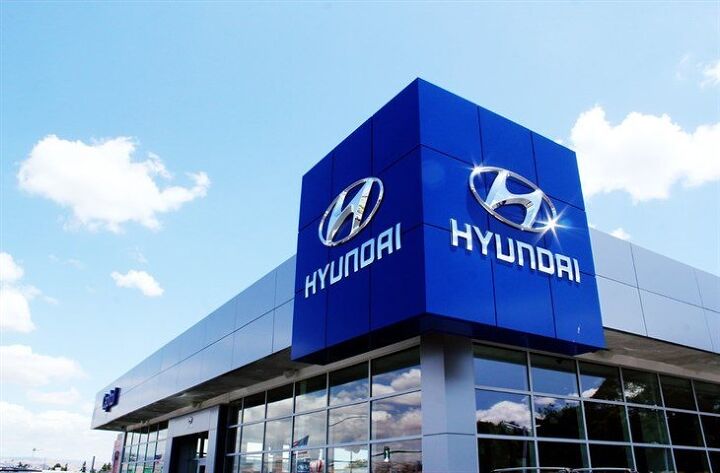
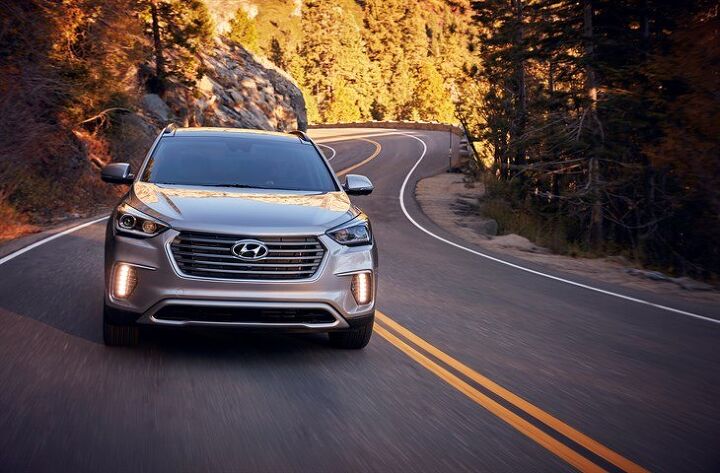
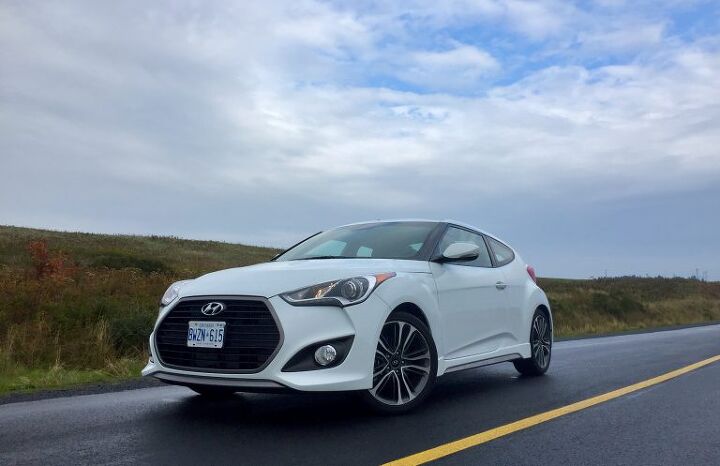
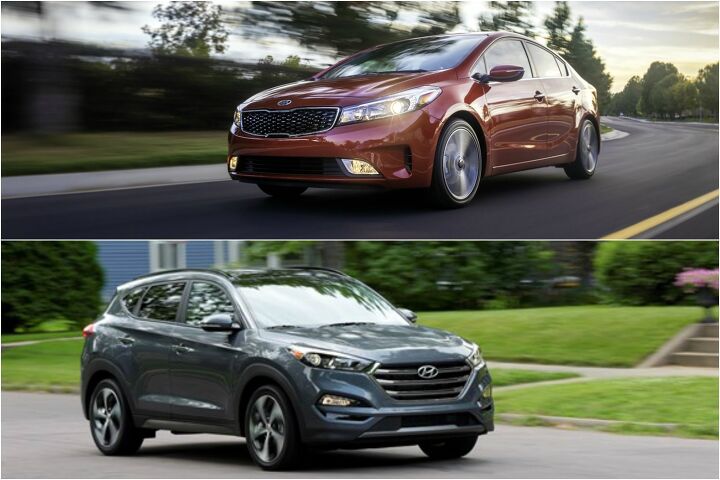


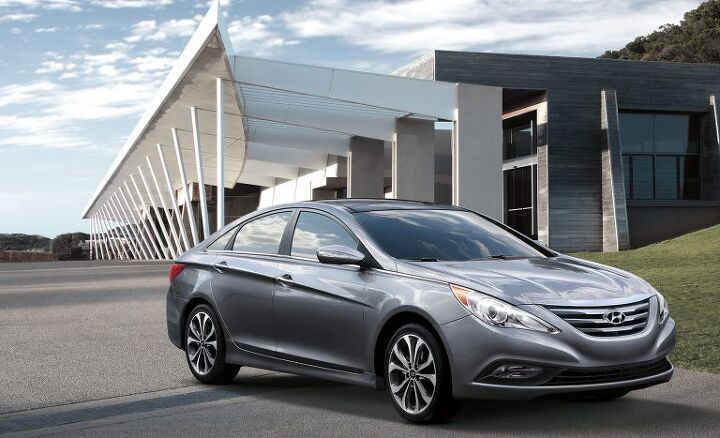












Recent Comments